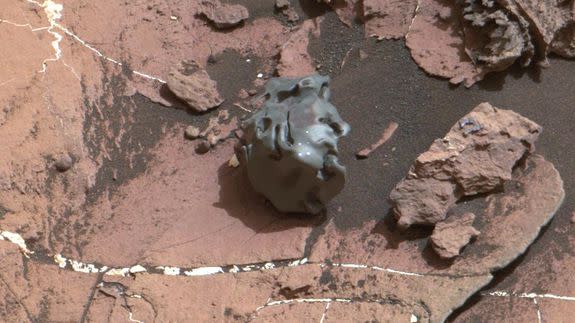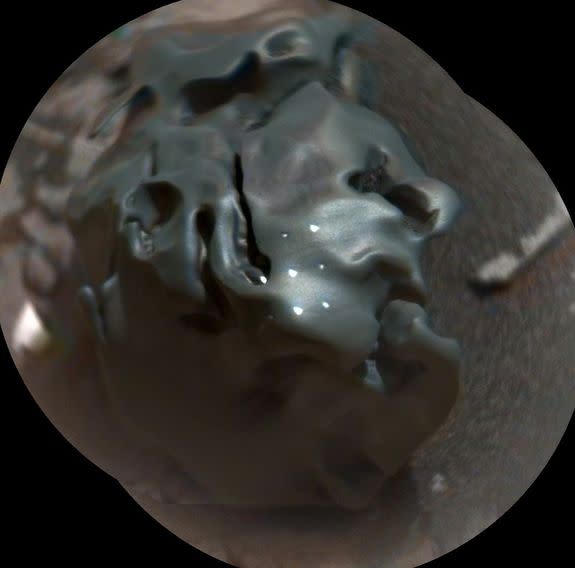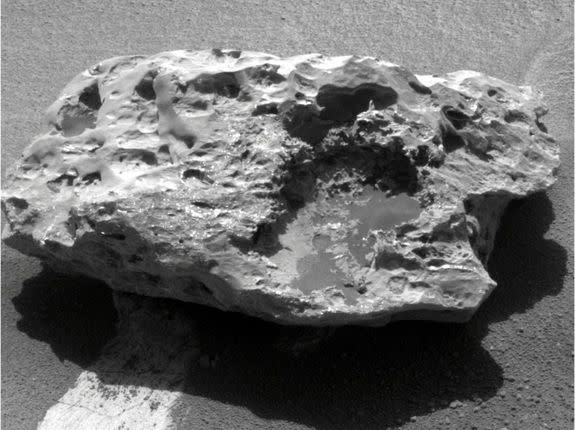NASA is firing lasers on Mars — here’s why

NASA's Curiosity rover spotted a strange rock on Mars, so of course, it shot it with a laser.
The intrepid, car-sized robot found an egg-shaped, golf ball-sized shiny rock that looked unlike any other rocks around it on Oct. 27.
NASA Scientists controlling the rover suspected that the odd rock is an iron meteorite that found its way to the Martian surface.
SEE ALSO: History's most spectacular Mars mission fails
So to confirm their suspicions, the researchers had Curiosity fire its laser at the meteorite.
The laser instrument (called ChemCam) has a specific scientific purpose. The instrument can decipher the chemical makeup of target rocks by gathering data on the types of light the rocks emit when hit with the laser beam.
According to Curiosity's chemical analysis, the rock discovered last week is made of nickel and iron. In addition, Curiosity also found an iron-nickel-phosphide mineral that is relatively common in these kinds of meteorites, but rare in other rocks, according to NASA.

Image: NASA/JPL-Caltech
These metal meteorites are also thought to be leftovers from the cores of asteroids floating around out in the solar system.
"Iron meteorites provide records of many different asteroids that broke up, with fragments of their cores ending up on Earth and on Mars," Curiosity team member Horton Newsom said in a statement.
"Mars may have sampled a different population of asteroids than Earth has."
This isn't the first meteorite a NASA rover on Mars has spotted.
NASA's Opportunity rover — which is still roaming the surface of Mars — found another iron-nickel meteorite on the planet's surface in 2009. That meteorite, known as the Block Island meteorite, is 2-feet-long, but Opportunity also found another, smaller space rock on the red planet in 2004.

Image: NASA/JPL-Caltech/Cornell University
Scientists aren't sure when Curiosity's meteorite (named Egg Rock) fell to the Martian surface, but the rover's laser may help them figure it out.
NASA will use the data collected by the ChemCam to figure out if the chemical composition in the interior of the meteorite is different from its exterior, possibly giving them clues as to how long the rock has been on eroding on the planet's surface.
The meteorite was found on lower Mount Sharp, the part of the Gale Crater that Curiosity is currently exploring. Scientists hope to use the rover's remaining lifespan to learn more about the past environment on Mars millions of years ago, giving them a deeper understanding of if and when the planet was habitable for microbial life.
The rover has been investigating the surface of Mars since its landing in 2012.
